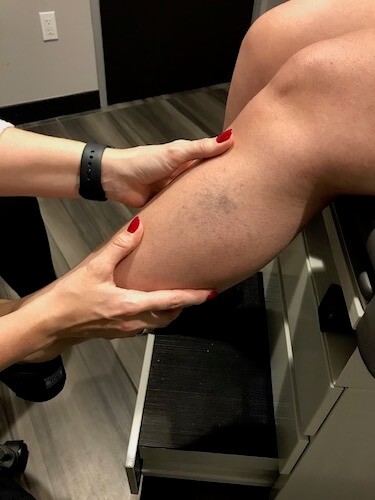In recognition of Men’s Health Month, here is a medical fact that may be surprising to some. Varicose veins in men are nearly as common and widespread as among women. While percentage estimates vary, the highly regarded Edinburgh Vein Study placed the rate of incidence at 17.4% for women and 15.2% for men aged 18-64. The rates increase dramatically over the age of 65.

One of the reasons that people believe women get varicose veins more often is that they are affected more in the superficial vein segments, which are typically visible. Men have more occurrences in deep vein segments, which are not visible.
There are a variety of factors that contribute to a higher risk of varicose veins. Heredity, lifestyle, occupation, leg trauma, age, and gender all affect the chances of acquiring the disease. Let us look at how gender makes an impact.
Blood travels through arteries and veins, delivering nourishment and removing waste from tissues.
Arteries originate from the heart and flow with great force to all parts of the body. Veins are on the return end of the journey and blood flows back to the heart with diminished force, often against the pull of gravity. Therefore, vein walls are lined with fleshy, one-way valves to aid with the directional flow.
If the walls of the vein are damaged or stretched, these valves fail to close sufficiently, and a reflux can occur in the blood flow. Blood can pool or potentially clot in these areas of the vein.
Progesterone is a hormone produced naturally in the human body and is vital to several organs. While men produce the hormone, women produce it at a much higher rate as it plays a role in menstruation and pregnancy.

Unfortunately, one of the impacts of progesterone is that it relaxes the walls of blood vessels. This relaxation can result in the development of varicose veins and spider veins. Pregnant women are especially susceptible as progesterone levels increase during pregnancy.
Aging can also cause a weakening of venous walls and impair the valves in a similar manner. Other factors for acquiring varicose veins are similarly gender neutral.
While gender does play a role in the risk of varicose veins, men are still affected and should seek treatment. Women tend to seek treatment earlier than men. The speculation is that visibility may play a factor in earlier diagnosis and treatment. However, the pain, diminished functionality, and health risks are equally significant for men and women.
ARE YOU A CANDIDATE? TAKE THE QUIZ
Those in Palm Springs, Riverside, La Quinta, Rancho Mirage, Victorville and Ontario areas of California should contact Empire Vein & Vascular Specialists, the area’s top vascular treatment center. The highly regarded medical staff features board-certified vascular surgeons and 5-star customer reviews. To schedule a free consultation, call 1-800-827-4267 now.